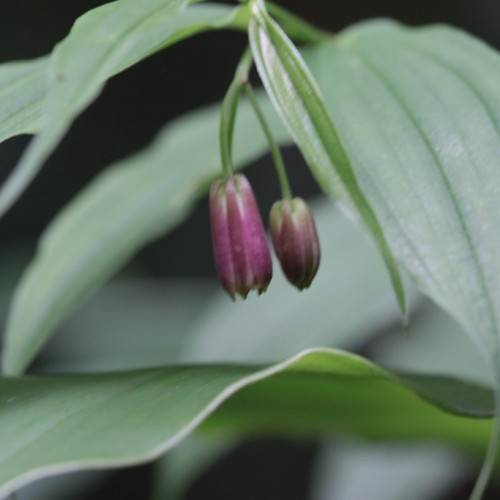
fairy bells
Disporum cantoniense
Cycle:
Herbaceous Perennial
Watering:
Average
Hardiness Zone:
4 - 9
Flowers:
Flowers
Sun:
Part shade,full shade
Leaf:
Yes
Growth Rate:
Low
Maintenance:
Low
Drought Tolerant:
Yes
Care Level:
Medium
watering
Fairy bells thrive best with regular watering. To keep these plants healthy, water them once a week, providing approximately 1 inch of water per week. It is important to give the plants enough water to reach the roots, so any method of watering that reaches all the way to the ground will work. In general, it is better to water deeply and infrequently rather than shallow and often. During the warmer months, it may be necessary to water more often, depending on how quickly the soil becomes dry. In the cooler months, watering can be decreased or eliminated. In general, if the top 2 to 3 inches of soil are dry to the touch, it is time to water.
sunlight
Fairy bells (Disporum cantoniense) thrive best in full to part shade. They prefer bright, indirect sunlight for several hours a day or dappled sunshine for longer periods of time. During the summer months, when the sun is especially strong and direct, they should receive indirect sunlight during the morning hours (around 8am until noon) and again in the early evening (between 6pm and 8pm). During winter months, DIRECT sunlight can be tolerated for a longer period of time -- up to 6-7 hours a day.
pruning
Fairy bells should be pruned in late winter or early spring when the plant is dormant. Pruning should be done lightly, with no more than 1-third of the plant removed at a time. This will help promote new growth and flowering. Do not prune later in the spring or summer as this will likely disrupt flowering and growth. When pruning fairy bells, look for dead, diseased, or damaged branches and remove them. Any remaining dead or diseased branches should be removed to maintain the health of the plant. Additionally, any branches that are crossing, growing inward, or low hanging should also be removed to maintain its shape and airflow.
